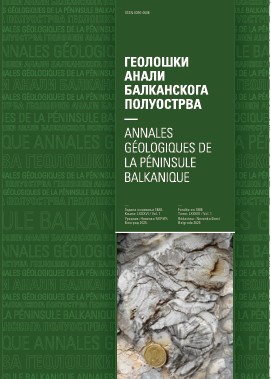Taxonomic diversity dynamics of Early Cretaceous brachiopods and gastropods in the Azerbaijanian domains of the Lesser Caucasus (Neo-Tethys Ocean)
Abstract
Palaeontological data available from the Azerbaijanian domains (Somkhit-Agdam, Sevan-Karabakh, and Miskhan-Kafan tectonic zones) of the Lesser Caucasus permit reconstruction of the regional taxonomic diversity dynamics of two groups of Early Cretaceous marine benthic invertebrates. Stratigraphical ranges of 31 species and 14 genera of brachiopods and 40 species and 31 genera of gastropods are considered. The total number of species and genera of brachiopods was low in the Berriasian-Valanginian and then rose to peak in the Barremian. Then, the diversity declined in the Aptian, and brachiopods are not known regionally from the Albian. Gastropods appeared in the Hauterivian and experienced a strong radiation in the Barremian. The diversity of species and genera declined in the Aptian (with a minor radiation in the Middle Aptian), and no gastropods are reported from the Albian. Globally, the number of brachiopod genera remained stable through the Early Cretaceous, and the number of gastropod genera increased stepwise with the maximum in the Albian. The regional and global patterns of the diversity dynamics differed for the both groups of marine benthic invertebrates. The Barremian maximum of the taxonomic diversity coincided with the regional flourishing of reefal ecosystems. The taxonomic diversity dynamics of brachiopods in the Azerbaijanian domains of the Lesser Caucasus is very similar to those of the Northern Caucasus, which is an evidence of proximity of these regions during the Early Cretaceous.
Copyright (c) 2022 Geološki anali Balkanskoga poluostrva

This work is licensed under a Creative Commons Attribution 4.0 International License.










